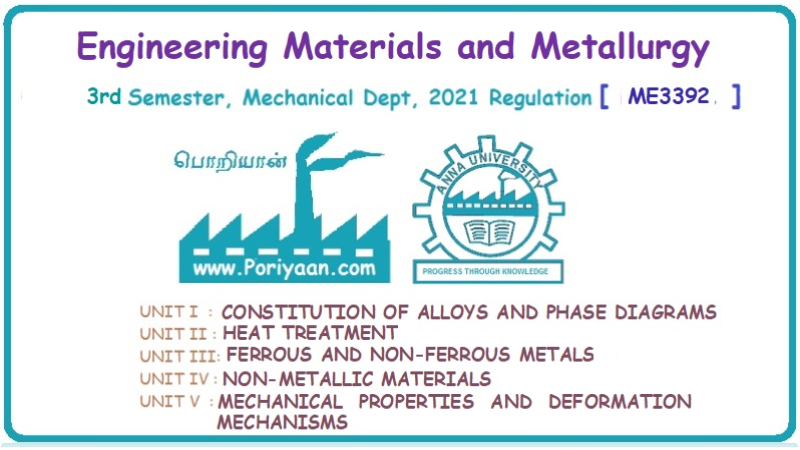Engineering Materials and Metallurgy: Unit V: Mechanical Properties And Testing
Mechanical Tests of Metals
Classification
Testing is an essential part of any engineering activity. Testing is applied to materials, components, and assemblies.
MECHANICAL TESTS OF METALS ✔ Testing is an essential part of any engineering activity. Testing is applied to materials, components, and assemblies. ✔ It consists of measurement of fundamental properties or measurement of responses to particular influences such as load, temperature, and corrodants. ✔ Why learn about mechanical testing? ■ The engineer and designer need to know the hardness, strength, and other characteristics of the materials they use. ■ The engineer and designer should also know about the way in which the properties are determined. ✔ It can be noted that the tests need to be conducted according to standard procedures so that one can have confidence in published test results. We shall discuss some of the basic mechanical tests that are conducted on materials, in detail, in the following sections. Note In India, the mechanical tests are standardised by Bureau of Indian Standards (BIS) ; in U.S.A – by the American Society for Testing and Materials (ASTM). Mechanical tests may be grouped into two classes as: 1. Destructive tests, and 2. Non-destructive tests. 1. Destructive tests: ✔ In this type of testing, the component or specimen to be tested is destroyed and cannot be reused. ✔ Examples of destructive tests are tensile test, impact test, bend test, fatigue test, torsion test, creep test, etc. 2. Non-destructive tests: ✔ In this type of testing, the component or specimen to be tested is not destroyed and can be reused after the test. ✔ Examples of non-destructive tests are radiography, ultrasonic inspection, etc.1. Introduction
2. Classification of Mechanical Tests
Engineering Materials and Metallurgy: Unit V: Mechanical Properties And Testing : Tag: : Classification - Mechanical Tests of Metals
Related Topics
Related Subjects
Engineering Materials and Metallurgy
ME3392 3rd semester Mechanical Dept | 2021 Regulation | 3rd Semester Mechanical Dept 2021 Regulation
